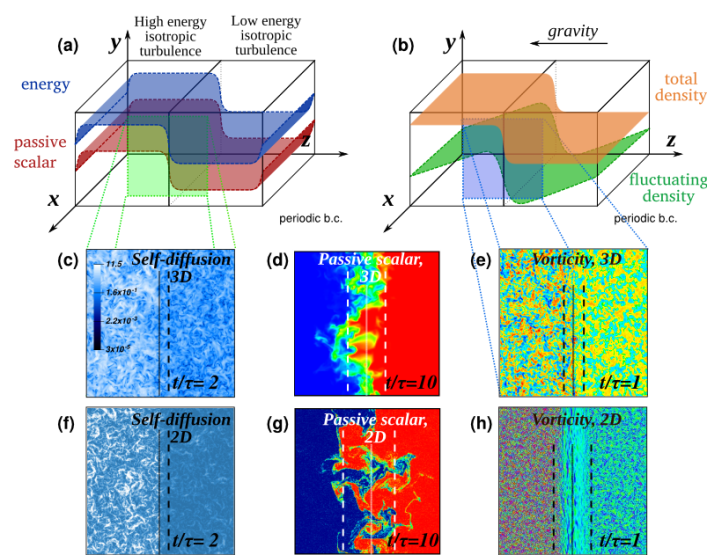27 Jul Turbulent Shearless Mixings
Turbulent shear-less mixings in the presence of or without a gradient of integral scale
A turbulent shear-less mixing layer is generated by the interaction of two homogeneous isotropic turbulent (HIT) fields. This kind of mixing is characterized by the absence of a mean shear, so that there is no production of turbulent kinetic energy and no mean convective transport. The turbulence spreading is caused only by the fluctuating pressure and velocity fields. The inhomogeneous statistics are typically due to the presence of the gradients of turbulent kinetic energy and integral scale.
– The turbulent diffusion is increased if the kinetic energy gradient is concurrent with the integral scale gradient, and vice versa (JFM 2006, v.549).
– The interaction of two isotropic turbulent fields of equal integral scale but different kinetic energy generates the simplest kind of inhomogeneous turbulent field. Our experiment shows that the presence of a turbulent energy gradient is sufficient for the appearance of intermittency and that during the mixing process the pressure transport is not negligible with respect to the turbulent velocity transport. These findings may open the way to the hypothesis that the presence of a gradient of turbulent energy is the minimal requirement for Gaussian departure in turbulence (Advances in Turbulence XI, pp. 697-699, and PRE 2008).

Figure 1. Scheme of the flow configuration. (a) Initial distribution of the turbulent energy and passive scalar. (b) total and fluctuating density distributions in the periodic box at the initial time in presence of a constant density gradient. (c-f) turbulent energy self-diffusion in 3D Phy.Rev.E 77 (2008) and 2D, (d-g) preliminary results on 3D and 2D passive scalar transport. (e-g) vorticity self diffusion in presence of a stable density stratification in both 3D (e) and 2D (g) formulations. The vertical dashed lines indicate the position of the intermittency front, the dotted lines indicate the centre of the mixing layer.



